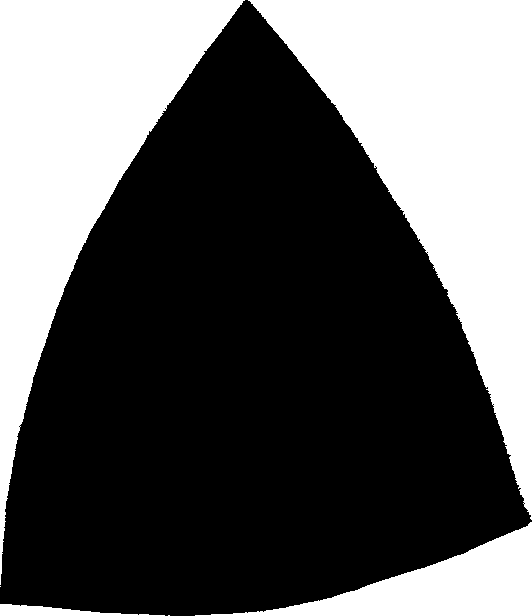
Main | Tools and Materials | Winding the Coils | Cutting the Rings Knitting the Maille | List of Weaves | My Armour Project | Accessories List of Armour Terms
My second helmet project was to me made from scratch. This time I would be making a Norman conical helmet using spangenhelm construction, which is to say that it would consist of four main sections connected together. Coming up with a pattern for this helmet would have been more difficult, but luckily, I already had a model to work from. A few months earlier, I had made up a wooden form in the shape of a conical helmet to test my vaccuuforming technique on. Since this wooden form was already in the shape of a conical helmet, and was already the right size, all I had to do was take a pattern from it. I carefully marked off one quarter of the form, and covered it with duct tape. When the duct tape had been trimmed to match the section of the form I was using, I removed it from the form, and flattened it out on a sheet of bristol board. This is the pattern I came up with:
I copied the pattern four times on to a sheet of 16 gauge stainless steel and cut the pieces out on a band saw with a metal cutting blade. After cleaning up the edges with a file, I set about on the next step, which was dishing the pieces into shape. Dishing is the process of hammering on the inside of a piece over a depression, forcing the flat piece of metal into a rounded shape. In spite of the fact that I had never dished before, this part of the project went very well. After only a couple of days, I had all of the pieces into the shape I wanted. Then I made my big mistake. I did not know that there was another step, called plannishing, in the shaping of the piece. Plannishing involves placing the piece over top of a round shape, and hammering the outside of it with a broad flat faced hammer to even out any humps, bumps, and lumps created during the dishing process. Unfortunately, since I did not know about plannishing, I naturally assumed that the pustular appearance of my helmet pieces would have to be removed by sanding, and so I proceeded to use a coarse (36 grit) sanding disk on them. The result was disastrous.
The sanding disk left deep scratches across the surfaces of the helmet
pieces, and no amount of sanding with finer grades of sand paper seemed
to get them out. After days of trying, it looked like all the hours
I had put in on the project had been wasted. Luckily, Sperry, a member of my local canton, came to the rescue. He allowed me to use his belt sander, and gave me some important advice. He told me never to use a new piece of sandpaper on a piece of metal. One should always use sandpaper that has been worn out on wood first. It took longer to sand the scratches out than it took me to dish the pieces in the first place, but eventually the task was done. My project was saved, and I could continue. This is the current state of the
conical helmet at this time. I will add more information, and, hopefully,
some photos as the project continues to develop.
|
